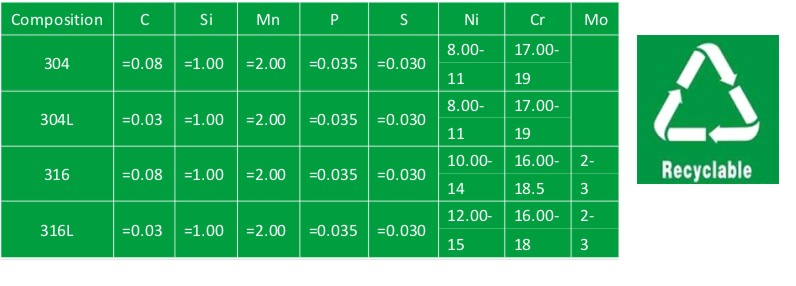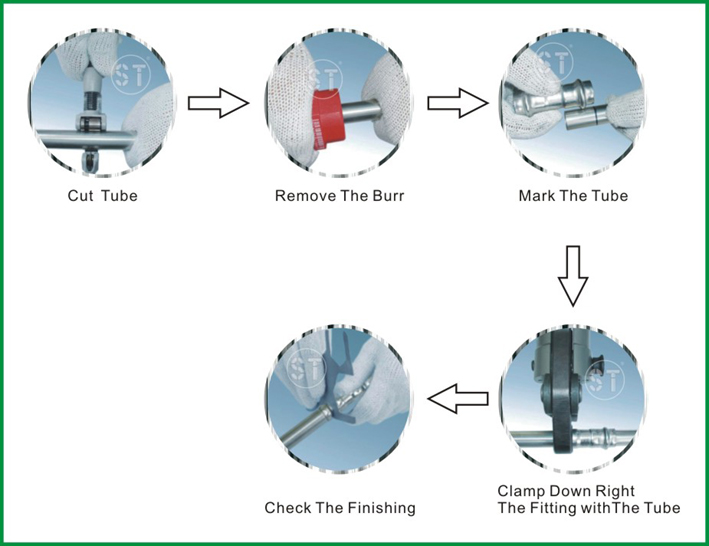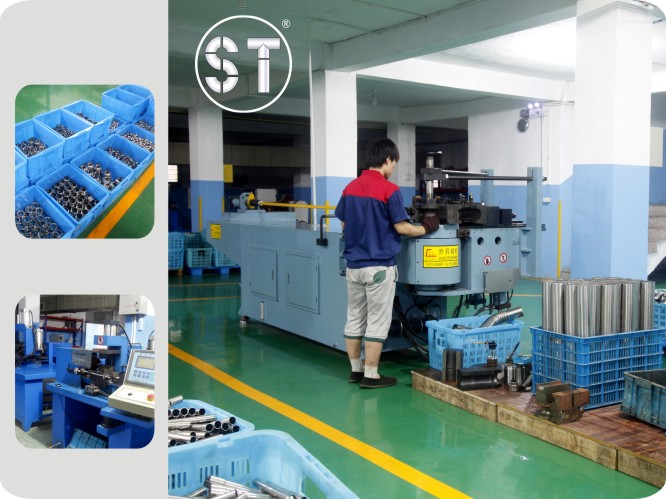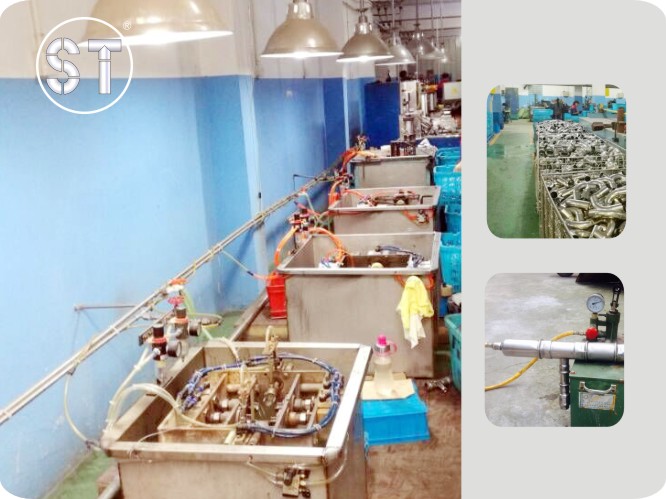Building Energy Conservation Westbound 1 This article focuses on the domestic and foreign wall insulation forms and several types of external wall thermal insulation 4 branches to construct the method of this department. At the same time: t艮 according to the different forms of external wall protection technology features, and should be satisfied Conditions to determine the selection of outer wall external thermal insulation forms and materials in Xinjiang, and provide design and selection for exterior insulation systems of heating residential buildings in Xinjiang region. When the old house is reformed, it will not disturb the life of the household and reduce the amount of insulation material.
Second, the external wall insulation technology should meet the conditions External wall insulation technology should consider the following several factors: Temperature stress: the thermal expansion and contraction caused by temperature changes, will cause the volume of non-structural structure changes, so that it is always The greater the rigidity, the weaker the anti-seismic capacity and the more serious the damage. This requires that the external insulation materials of the external walls of buildings must meet the principle of flexible gradual change in order to disperse and absorb seismic stress and prevent large-scale cracking, peeling or even collapse of the heat insulation layer under the influence of seismic forces. drop.
4. Absorption rate: In order to avoid water or water vapor damage to buildings, external insulation materials with good hydrophobicity and good water vapor permeability should be used to prevent condensation or wall insulation in the process of water or water vapor migration. Increase the moisture content of the building, improve the construction of the outer insulation layer of rain erosion and freeze-thaw material selection bookmark1 text / Zheng Li, the external wall insulation form (heating residential building part JGJ26-95) new standard in order to achieve energy-saving 50% of this A goal not only improves the thermal insulation requirements of the enclosure structure, but also considers the impact of external thermal bridge parts such as seismic columns and ring beams on heat transfer to the external wall, and requires that the average heat transfer coefficient of the external wall conforms to the energy-saving design standard for the enclosure. Structural insulation performance requirements.
In addition, the insulation practice is to compound the thermal insulation material on the outside of the bearing wall. The thermal stability of the building is good, the cold bridge can be avoided, the moisture condition of the wall is improved, the room temperature is kept stable, and the waterproof and airtightness of the wall is improved. It is conducive to improving the quality of indoor thermal environment and living comfortably. The outer sheath can protect the main structure, prolong the service life of the structure, and increase the use area of ​​the building. It is in an unstable state. Therefore, the temperature stress is outside the external wall. One of the main destructive forces of the insulation layer. In the design of thermal insulation and crack resistance structure, the selection of insulation materials should meet the principle of flexible gradient, and the deformation of the material in the outer layer should be higher than the deformation of the inner layer of material, gradually changing layer by layer.
Wind pressure: Generally, positive wind pressure generates thrust, negative wind pressure generates suction, and both wind pressures will cause great damage to the external insulation layer of the building. This requires the external insulation layer to have considerable wind pressure resistance, and In terms of negative wind pressure, it is required that the insulating layer be free of cavities and the air layer should be eliminated so as to avoid the volume expansion of the air layer in the insulating layer under the condition of negative wind pressure and cause damage to the insulation layer of buildings, especially high-rise buildings.
Seismic forces: Seismic forces can cause high-rise building structures and insulation surfaces to crush, shear, or distort, while the insulation surface is capable.
5. Fire prevention: The insulation layer shall have anti-fire function, and shall have the characteristics of preventing the spread of fire and preventing the release of soot or toxic gases in the event of a fire. The strength and volume of the material must not be reduced too much and no slump, otherwise, It will cause harm to residents or firefighters and cause great difficulties in rescue work.
III. Several structural features of the external insulation system of the external wall The characteristics of the external material external insulation system introduced by the external wall are: ZL adhesive powder polystyrene heat insulation material system consists of interface layer, thermal insulation layer, anti-crack protection layer, decorative layer, etc. Partly composed. Has excellent weathering performance; low thermal conductivity, high softening coefficient, freeze-thaw resistance, anti-aging; external insulation technology is more suitable for high-rise shear wall structure system, and has certain quality assurance and price advantages. Just add 80 mm thick polystyrene insulation board to meet the external wall insulation requirements in Xinjiang.
House construction, it is more economical to stick polystyrene board insulation technology on the outside of the wall. In the multi-storey residential building in Xinjiang area, 240 mm thick clay hollow bricks are used as load-bearing outer walls, and a 60-mm-thick polystyrene board insulation layer is compounded to meet energy-saving design standards.
External wall insulation technology has many advantages, which not only significantly improves the living comfort, but also has very good energy-saving effects and comprehensive economic benefits. With the continuous improvement of China's building energy-saving requirements and comfort requirements, the need for exterior wall thermal insulation technology is increasingly pressing, and the external thermal insulation technology market is bound to expand rapidly.
At present, various kinds of external wall thermal insulation technologies at home and abroad have achieved considerable development. Under such conditions, advancing the external thermal insulation technology in Xinjiang region can draw on the advanced domestic and foreign advanced experience, and combine with the actual conditions in Xinjiang to continuously innovate and transform, and develop at a relatively high starting point and at a relatively high speed.
The development of external thermal insulation technology will inevitably be a situation in which various technologies learn from each other, infiltrate each other, and compete with each other. Only in this way can we promote the progress of external thermal insulation technology, which is conducive to the overall progress of building technology. In the competition and development of a variety of exterior insulation technologies, project quality, durability and reasonable prices will be the key to victory.
The technical experience and engineering practice in many areas of the Mainland have proved that the external insulation technology of the external wall is indeed an important basic development direction of China's building energy-saving technology. With the efforts of all parties, the prosperity of China's external thermal insulation technology is just around the corner.
The surgical center uses flexible crack resistance technology. The elastic modulus of each layer of material changes gradually and gradually. Substrate deformation adaptability, effectively prevent the production of wall cracks; strong negative pressure resistance; good air permeability; fire rating B1 level; construction is convenient; multi-point multi-layer construction, speed; correction ability is strong.
The characteristics of the insulation system are as follows: Polystyrene sheet diagonally inserted steel wire mesh and concrete wall are cast in place at once, once lived, construction is simple, and operation is convenient; the system has no cavity, strong wind pressure resistance, and is suitable for the bismuth layer and the high-rise shear wall Structure external wall insulation system; polystyrene board low thermal conductivity, good insulation performance, compared with other insulation materials, the overall cost is low; other properties and ZL polyphenylene powder slurry insulation system has the same characteristics.
The characteristics of the insulation system are: the polystyrene board* side is processed into a trapezoidal groove, and it is cast in place with the concrete wall as a whole, and once lived, the construction is simple and convenient; the other properties are the same as those of the in-situ exterior insulation technology of cast-in-place polyphenylene cast-in-situ.
The characteristics are: the polyphenyl board with polymer mortar paste to the outside of the wall, until the strength of the mortar, the insulation layer to do anti-crack, energy-saving effect is good, water, rain, durability, and no cracks on the surface; Applicable to the decoration of various decorative materials; the transformation of the old room is not only thermal insulation and beauty; the best choice for hollow brick, hollow concrete block external wall thermal insulation construction; low cost, simple construction.
four. The form of external wall insulation that should be chosen in Xinjiang region spans the cold and cold climate zones and belongs to the heating area. The average outdoor temperature during the heating period in Urumqi is -8.5C, and the entire heating period is 62 days, which is also a key area for energy conservation. Correspondingly, strict requirements are imposed on the external wall insulation, and the external wall insulation requirements required by the local climate conditions must also be met. At the same time, the structural system requirements that meet the 8 degree seismic fortification requirements in the Xinjiang region must be considered. The new energy-saving standard also puts forward higher requirements for the thermal insulation performance of the external protective structure. The average heat transfer coefficient of the external wall of Urumqi region is based on the basic construction practices of the above-mentioned external wall thermal insulation systems, and the external thermal insulation system should meet The basic conditions, combined with the K characteristics of Xinjiang and the thermal properties of new wall materials, Xinjiang region is more suitable for the selection of external thermal insulation technology.
It is suggested to refer to the following several types of temperature dehumidification in the selection of wall insulation forms: ZL rubber powder polyphenylene granule external wall external insulation system has good thermal insulation performance, low thermal conductivity, good thermal stability, and low shrinkage. , Flexible crack resistance, strong wind pressure resistance, excellent anti-seismic performance, good hydrophobicity, strong air permeability, good fire resistance, good resistance to freezing and thawing, good weather resistance, good adaptability, convenient construction, high speed, good recycling . Ecological building materials, reasonable overall cost, and superior performance and price advantages can be used as the first choice in the selection of high-rise or low-rise exterior wall thermal insulation technology of the frame structure system. The infill walls of the frame structure system mainly consist of aerated concrete blocks and ceramsite concrete blocks. (250 mm thick) dominated. At present, the domestic single wall material can not meet the external wall thermal insulation technology requirements, therefore, with 2L plastic powder polystyrene insulation mortar composite 60mm thick to meet the heating residential building exterior insulation system technical design requirements, both economic, but also Convenience.
Netted polystyrene board and netless polystyrene board exterior wall casted together with concrete wall
Stainless Steel M type Press fittings and V type Stainless Steel Press fittings pipeline system is widely used in cold and hot water supply, heating supply, fire protection, medicinal gas,
industrial petroleum pipeline system etc.
Compared with traditional pipeline system, it`s not only more economical, safer and healthier, but also easier and faster for
installation with longer service life.

1. Stainless Steel M Type Press Fittings range:
Coupling -- Equal coupling, Reducing coupling, Slip coupling, coupling with male/ female threads;
Elbow -- Equal elbow, Elbow 90°, Elbow 45°, Reducing elbow, Elbow with plain end, Elbow with wall plate, and Elbow with male/ female threads;
Tee -- Equal tee, Reducing tee, Tee with wall plate, and Tee with male/ female threads;
Others-- Pipe cap, Pipe Bridge and Flange connector.
2. Stainless Steel M Type Press fittings Material: Stainless steel 304L, Edelstahl 1.4306/ Edelstahl 1.4301, AISI304L, Inox304L;
Stainless steel 316L, Edelstahl1.4404, AISI316L, Inox316L;
Galvanized carbon steel, 1.0034C-Stahl,Kohlenstoffstahl, ACCIAIO AL CARBONIO.

3. Stainless Steel M Type Press Fittings Size: 3/8``-4``inch or as request, pipe wall thickness: 1.0--2.0mm
Sizes range:
DVGW W534:1995: 15, 18, 22, 28, 35, 42, 54, 76.1, 88.9, 108mm.
JIS G 3448-1980: 15.88, 22.22, 28.58, 34.00, 42.7, 48.6, 76.1, 88.9, 108mm.
4. Stainless Steel M Type Press Fittings Standard:
Press fitting standard: (DIN) DVGW W534-1995; (JIS) JWWA G116:2001; GB/T 19228.1-2003
Pipe standard: DIN10312:2003; GB/T 19228.2-2003
O-ring sealing standard: CEN EN 681-1:2006; GBT 19228.3-2003
5. O-Ring Seal: "Chlorinated butyl rubber" (CIIR), EPDM, HNBR, NBR and FKM, etc.
EPDM (black): max working pressure 16bar, working temperature from -20℃ to 120℃,
Suit medium: cold and hot water, compressed Air etc.
6. Press Fittings Galvanization: all carbon steel pipe fittings are plated with rust-resistant zinc.
7. Anneal: all stainless steel M type press fittings are annealed in inert gases before packing.
Stainless Steel Press Fittings Installation and Connection Order

Equipments And Quality Control

Orderly Workshop

Efficient Anneal Equipment

Pressure Testing

Tensile Testing
Stainless Steel M Profile Press Fittings(DVGW)
Stainless Steel M Profile Press Fittings,Female Tee Press Pipe Fitting,Stainless Steel M Type Press Fittings,Din Standard Press Fittings
WENZHOU KASIN VALVE PIPE FITTING CO., LTD. , https://www.kasinvalvefitting.com